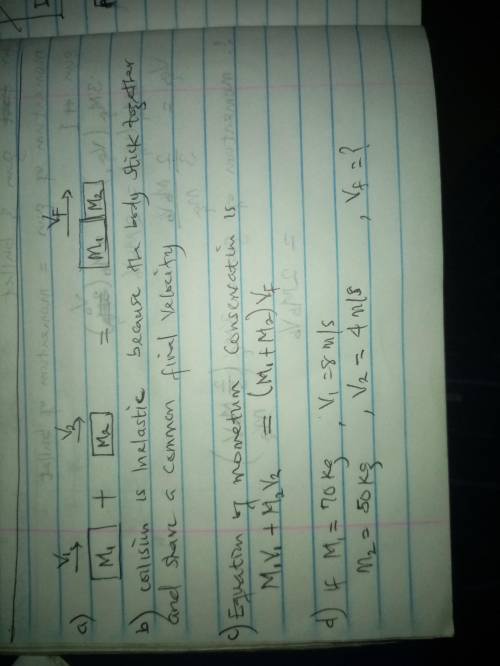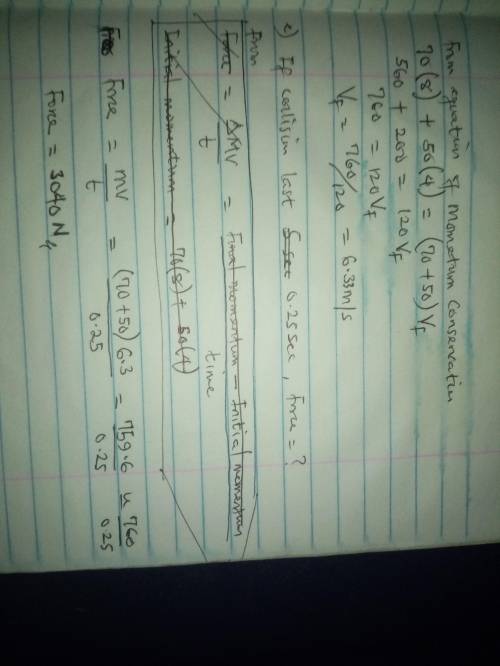
(4 points) A mother with mass m1 is skating at velocity v1 behind her daughter whose mass is m2, who is skating at v2 . Instead of passing her, Mother inadvertently crashes into Daughter and grabs Daughter around the waist. They maintain their balance and skate off together with velocity vf , right after the collision. a) Sketch the problem with before-and-after diagrams. (You can represent the skaters as blocks). b) Is the collision best described as elastic, inelastic, or perfectly inelastic, why? c) Write the general equations for conservation of momentum in terms of m1 , m2 , v1, v2 , and final velocity vf . d) Given: m1 = 70.0 kg, v1 = 8.00 m/s m2 = 50 kg, v2= 4.00 m/s Solve for the final velocity vf . e) If the collision last 0.25 s, what is the average force delivered during the collision?

Answers: 2
Another question on Physics

Physics, 21.06.2019 19:30
A33.1 g copper object is launched from a 1.5 m 30° steel incline positioned on the floor by being pulled up a string attached to a 50.0 g mass suspended vertically over a pulley. the object is projected towards a glass table where it lands when it is at the point along its trajectory with the lowest speed. it comes to a halt when it clears the opposite edge of the table. it then falls and lands on 9 physics texts each 5 cm thick that are stacked on the floor on the opposite side of the table. assume that the table does not have a ledge and the rectangular object experiences 0.05 n of air resistance as it falls towards the books. how far and how long did the object travel and how fast does it hit the books. assume that at the moment the copper object leaves the incline, the massless string and ideal pulley break off
Answers: 2

Physics, 22.06.2019 12:00
Suppose a comet has an orbital period of 309.1 years around the sun. what is it’s average distance from the sun?
Answers: 1

Physics, 22.06.2019 13:00
Nacidified solution was electrolyzed using copper electrodes. a constant current of 1.18 a caused the anode to lose 0.584 g after 1.52 ✕ 103 s. given that the charge of an electron is 1.6022 ✕ 10−19 c, calculate avogadro's number. assume that copper is oxidized to cu2+ ions.
Answers: 1

Physics, 22.06.2019 14:00
What is the force that opposes motion and works against the downward pull? a) friction b) gravity c) weight d) acceleration
Answers: 1
You know the right answer?
(4 points) A mother with mass m1 is skating at velocity v1 behind her daughter whose mass is m2, who...
Questions

Mathematics, 21.02.2020 00:00

Mathematics, 21.02.2020 00:00


History, 21.02.2020 00:00











Computers and Technology, 21.02.2020 00:00









